Elbow Pain
Elbow pain in a common complaint among athletes especially throwers and those who play racquet sports. Muscle knots in muscles in the neck, shoulder, back, and forearm, can contribute to elbow pain.

Causes
Carrying heavy objects for extended periods of time: Carrying heavy objects for extended periods can place continuous stress on the muscles and tendons around your elbow, especially if your grip or posture isn’t ideal. This strain can lead to muscle fatigue and the development of painful knots in the forearm and upper arm. Over time, these knots can contribute to elbow pain and make lifting or holding objects feel uncomfortable.
Overuse: Overuse of the elbow—like repeated lifting, gripping, or typing—can strain the muscles and tendons around the joint, especially if done without enough rest. This constant stress can lead to tight, overworked muscles that form painful knots in the forearm and upper arm. Over time, these knots can contribute to elbow pain, making everyday tasks feel uncomfortable or limited.
Injury: An elbow injury—like a strain, sprain, or impact—can damage muscles and tendons, leading to inflammation and discomfort. As your body tries to protect the area, surrounding muscles may tighten up, forming painful knots that limit movement and flexibility. These muscle knots can make elbow pain worse over time, especially if the injury isn’t given proper rest and care.
Repetitive use: Repetitive use of the elbow—like constant typing, lifting, or gripping—can gradually wear down the muscles and tendons around the joint. This ongoing strain can lead to tightness and the formation of painful muscle knots, especially in the forearm and upper arm. Over time, these knots can contribute to elbow pain and make everyday movements feel stiff or uncomfortable.
Immobilization: Immobilization of the elbow—like wearing a brace or keeping it in one position for too long—can cause muscles around the joint to stiffen and weaken. This lack of movement may lead to poor circulation and the development of muscle knots, especially in the upper arm and forearm. Over time, these knots can contribute to elbow pain and make it harder to regain a full range of motion.
Using a cane that is too long: Using a cane that’s too long can cause your elbow to stay in a more extended position than is natural, placing extra strain on the joint and surrounding muscles. This awkward posture can lead to muscle fatigue and the development of painful knots in the upper arm and forearm. Over time, it can contribute to elbow pain and make walking or standing less comfortable.
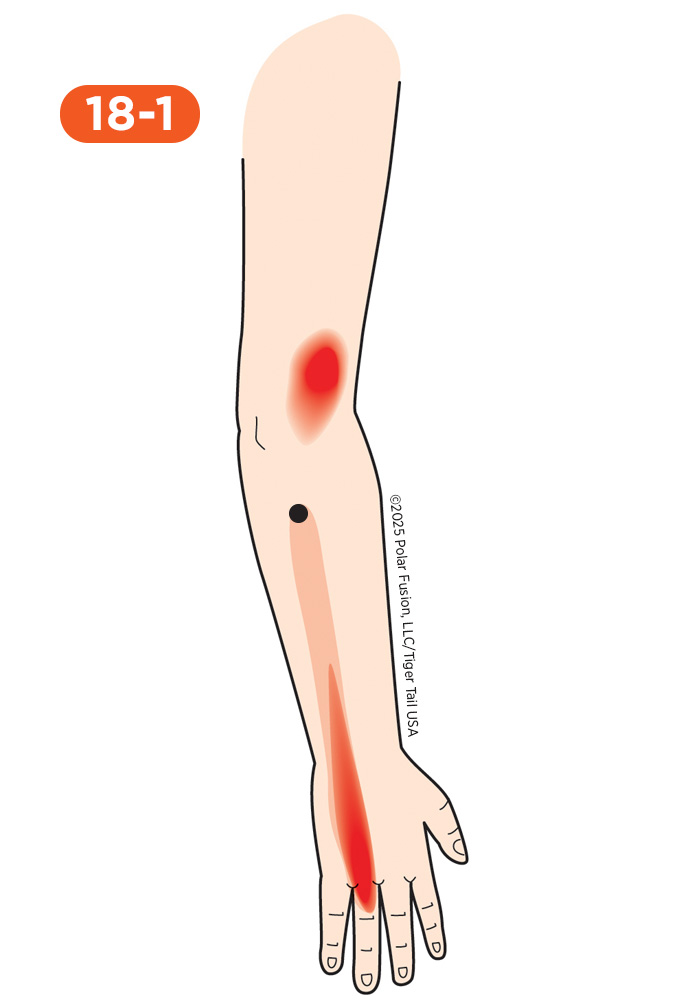
I Feel
Tennis Elbow
When the muscle that controls the straightening of your ring finger, the ring finger extensor, is causing trouble, the discomfort can be felt surprisingly high up. You’ll typically feel a deep, burning ache right around the outer elbow, where the extensor muscles attach, and this pain often travels down the backside of your forearm. The specific area that hurts is often the path leading directly to your ring finger, making that digit feel strained and weak. This specific muscle gets aggravated by repetitive actions that involve gripping and releasing, such as using small tools or typing vigorously with the hand held awkwardly. It can be super sensitive if you press on the muscle near the elbow. When this muscle is strained, it can contribute to the symptoms of tennis elbow, making simple straightening and lifting motions painful.
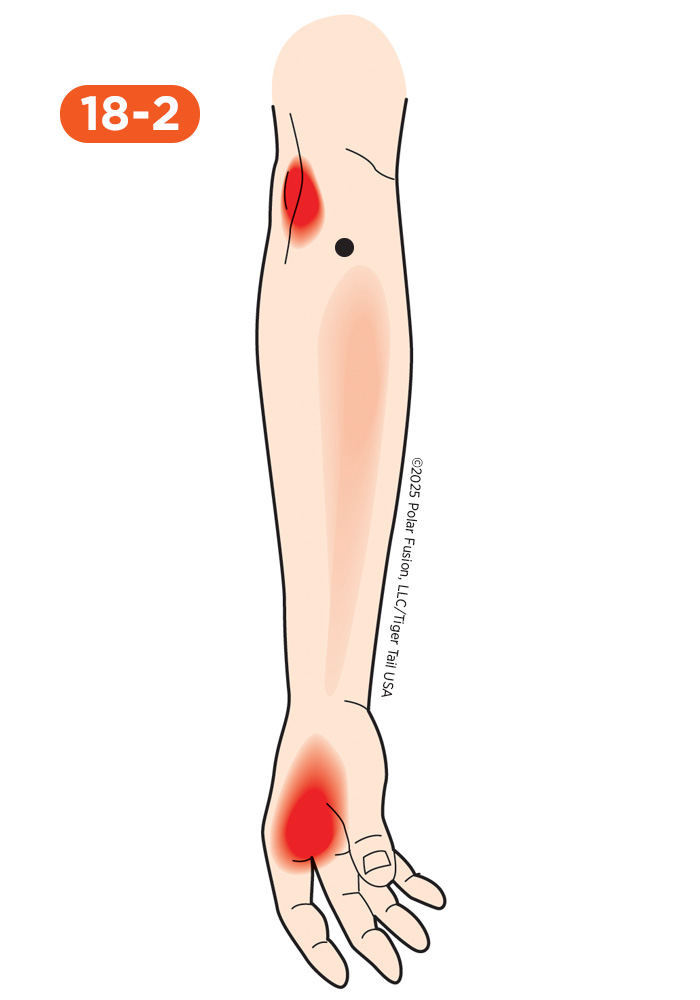
I Feel
Pain on the Thumb Side of Arm
That persistent pain you feel on the thumb side of the wrist is from muscle knots in the thick muscle running from your upper arm bone down to your wrist, the brachioradialis. You’ll typically feel a deep, burning ache concentrated near the outer elbow, and that discomfort runs strongly down the thumb side of your forearm. This muscle helps you bend your elbow, especially when your thumb is pointing up (a neutral grip), so you’ll notice the pain gets significantly worse when you lift heavy objects, grip hard while turning a wrench, or try to stabilize a bag of groceries. It can be super tender if you press on the muscle high up on the forearm. Because of its common attachment point with other extensor muscles, issues here can sometimes be mistaken for tennis elbow, leaving your hand and elbow feeling surprisingly weak during twisting tasks.
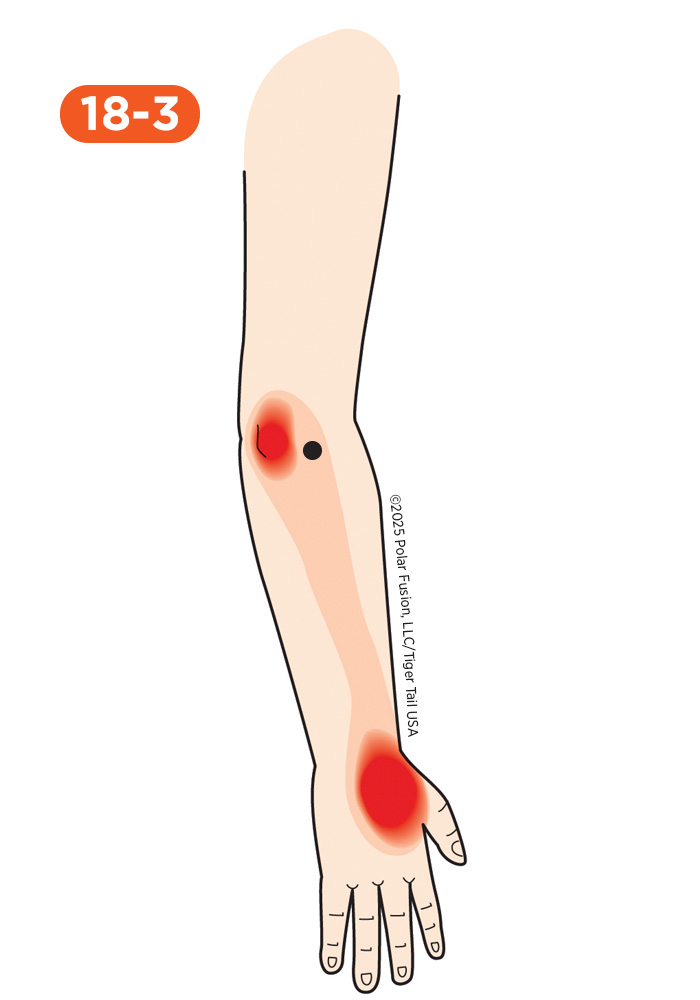
I Feel
Tennis Elbow
When you’re experiencing sharp, localized pain that feels like tennis elbow, the cause is often chronic muscle knots in the longer forearm muscle, the extensor carpi radialis longus. The pain usually concentrates right on the bony bump outside the elbow, presenting as a sharp, burning ache that can radiate along the forearm toward the wrist. You may notice the pain worsens significantly during activities that involve gripping or extending the wrist, such as shaking hands firmly, lifting a full coffee cup with the palm down, or using a screwdriver forcefully. Because the extensor carpi radialis longus stabilizes the wrist during powerful hand movements, its knotting can easily mimic deeper issues like lateral epicondylitis or radial nerve irritation. The tissue high on the outer forearm is highly sensitive to pressure, which can leave your grip feeling weak and restricted, limiting your hand strength.
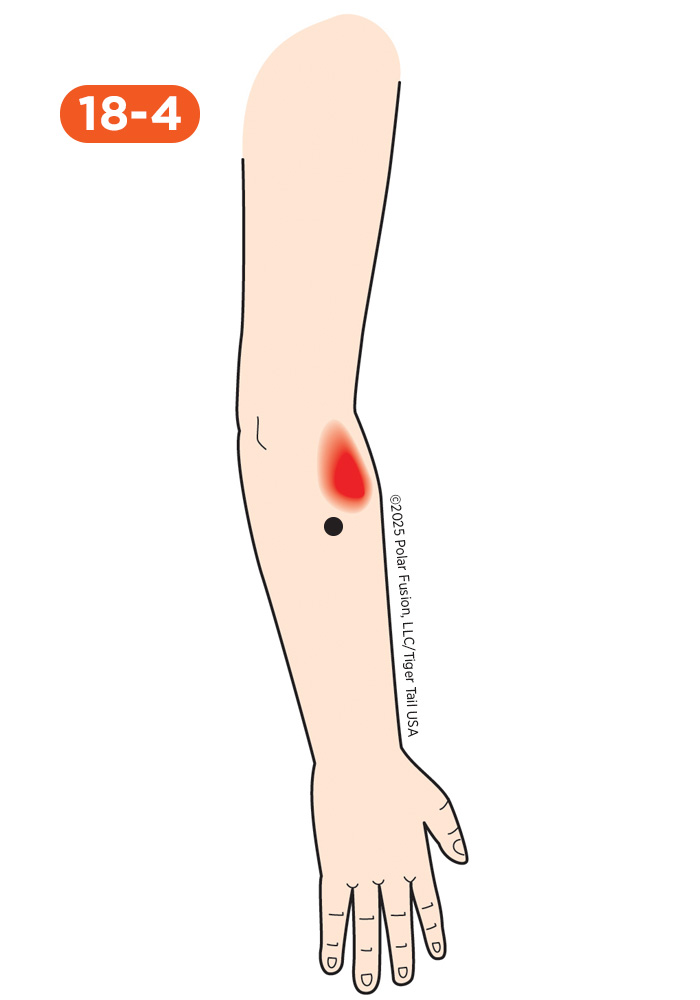
I Feel
Lateral Elbow Pain
That sharp, specific lateral elbow pain you feel when you straighten your arm is often caused by tight muscle knots in the small muscle right at the point of your elbow, the anconeus. The discomfort usually focuses right on the bony bump outside the elbow and can extend into the back of the forearm, presenting as a sharp, pinching ache during movement. You’ll find the pain gets significantly worse during activities that lock the elbow or require stabilization, like pushing yourself up from a chair, doing push-ups, or twisting your forearm strongly. Because the Anconeus assists in stabilizing the joint, its knotting can easily mimic deeper issues, such as Lateral Epicondylitis (true Tennis Elbow) or ulnar nerve irritation. The tissue on the back, outer side of the elbow is highly sensitive to pressure, leaving your elbow feeling guarded and restricted during extension.
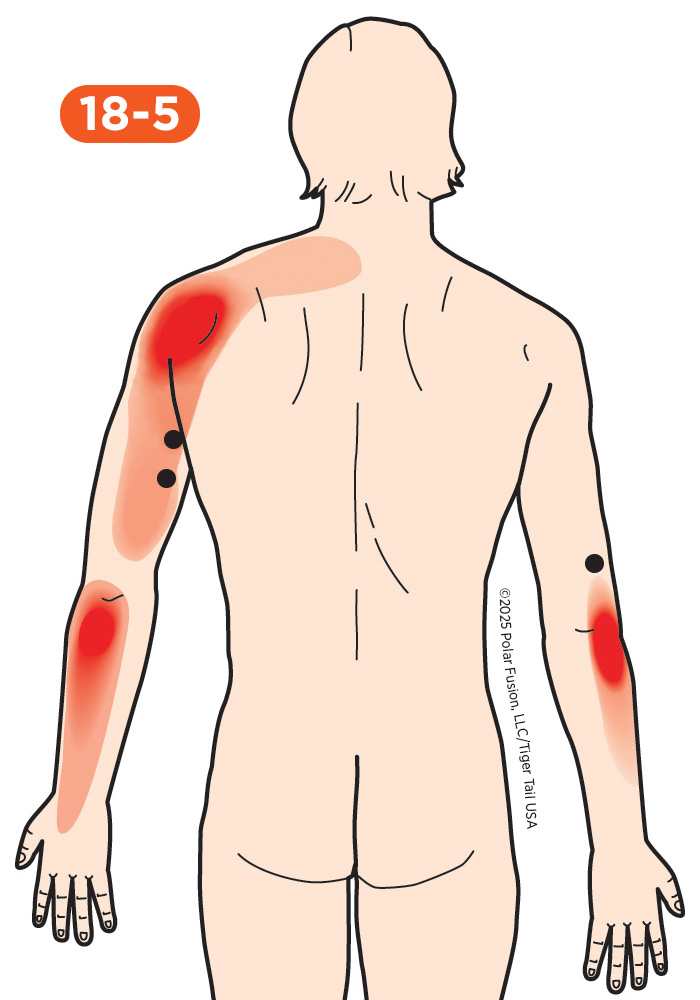
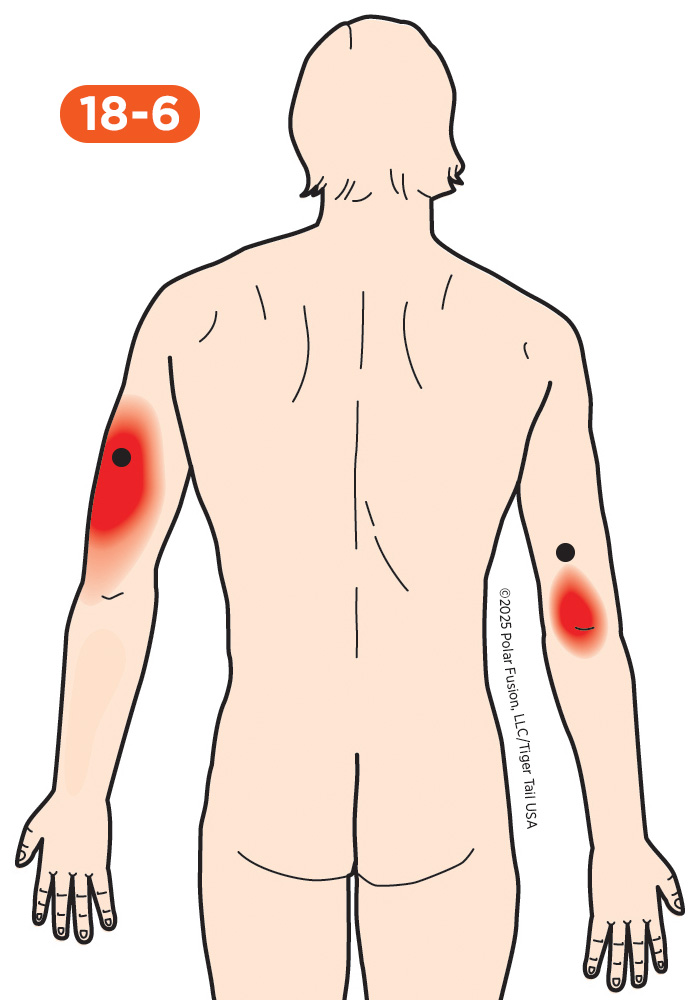

I Feel
Golfer's Elbow
That sharp, specific pain you feel that mimics golfer’s elbow (medial epicondylitis) can be caused by tight muscle knots in the muscle on the back of the upper arm, the triceps brachii muscle. The discomfort usually focuses deep beneath the forearm flexors near the inner elbow and can run along the back of the upper arm. You’ll find the pain gets significantly worse when you’re doing forceful activities that strain the back of the arm, like pushing a heavy door, doing overhead presses, or gripping something tightly while extending the elbow. Because the triceps wraps so closely around the elbow joint, its knotting can easily mimic deeper problems like true medial epicondylitis or ulnar nerve irritation. The muscle belly on the back of the upper arm is extremely sensitive to pressure, and it leaves your elbow feeling guarded and restricted, making powerful pressing or gripping painful.

I Feel
Tennis Elbow
When you’re experiencing sharp, localized pain that feels exactly like tennis elbow, the cause is often chronic muscle knots in the deep forearm rotator muscle, the supinator. The discomfort usually centers right on the bony bump outside the elbow, presenting as a deep, constant throbbing that resembles a strain. You’ll notice the pain worsens significantly during activities that twist the forearm outward, such as turning a screwdriver, wringing out a wet cloth, or reaching to turn a key in a lock. Because the supinator wraps around the bone and is close to the radial nerve, its knotting can easily mimic deeper issues, like lateral epicondylitis or radial tunnel syndrome (nerve compression). The muscle mass deep in the outer forearm is sensitive to pressure, and this tightness severely limits your ability to rotate your palm upward.
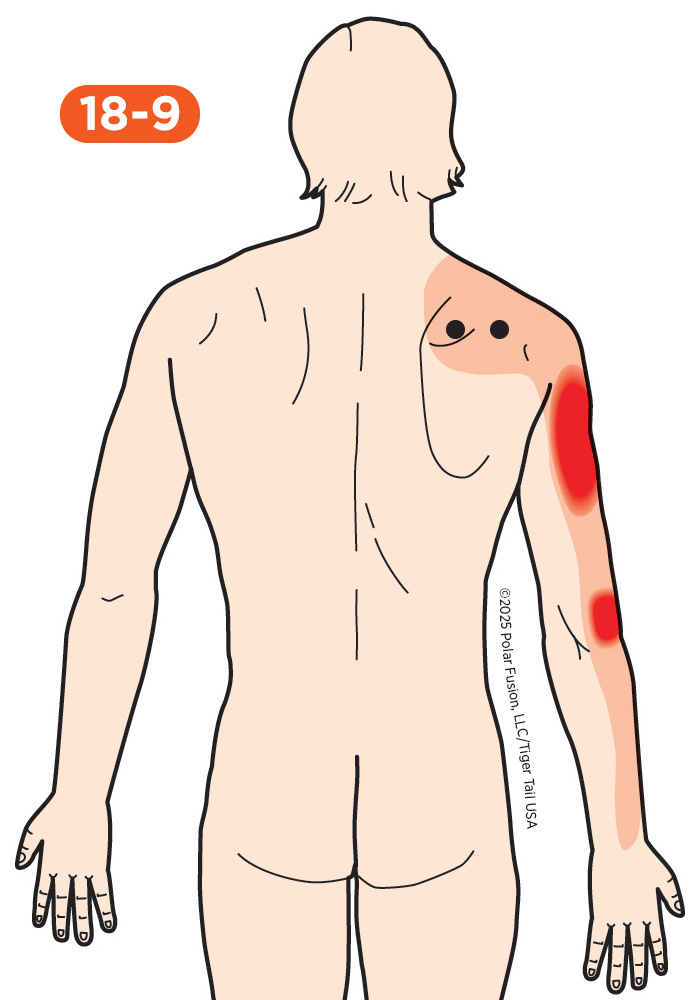
I Feel
Restricted Range of Motion - Straightening the Elbow
That frustrating restriction and discomfort you feel when trying to fully straighten your elbow is sometimes caused by muscle knots in a small rotator cuff muscle on top of your shoulder blade, the supraspinatus. The pain from these muscle knots often manifests as a deep, aching sensation that restricts your shoulder, radiating down the outside of your arm to your elbow. This makes it uncomfortable or difficult to fully extend your arm straight, which can be mistaken for elbow joint problems, issues with your biceps or triceps tendons, or nerve compression affecting arm extension. You’ll notice the restriction worsening when you try to reach out straight in front of you, perform pushing movements that require full arm extension, carry objects with your arm extended, do swimming strokes that demand full arm reach, or engage in any activity that requires locking out your elbow. When you press into the muscle on top of your shoulder blade, you’ll likely find it very tender with tight, knotted areas, and your elbow may feel restricted and weak.

I Feel
Restricted Range of Motion - Bending Elbow
The stiffness and limitation you feel when trying to fully bend your elbow are often caused by chronic muscle knots in the prominent muscle on the front of your upper arm, the biceps brachii. The pain from these knots is usually a deep, cramping sensation in the front of your arm that prevents comfortable full flexion, sometimes along with a tight, pulling feeling that stops you from bringing your hand all the way to your shoulder. This can be mistaken for elbow joint arthritis, capsular restriction, or tendon adhesions. You’ll notice the restriction worsening when you try to touch your shoulder with your hand, do full-range bicep curls, bring food to your mouth, comb your hair, or engage in any activity that requires maximum elbow bending. When you press on the muscle at the front of your upper arm, you’ll likely find it is very tender with tight, shortened bands that resist stretching, and your elbow will feel stiff and limited.

I Feel
Restricted Range of Motion - Straightening the Elbow
When you experience a painful restriction or inability to fully straighten your elbow, the cause can sometimes be tight muscle knots in a muscle located deep under your upper shoulder blade, the serratus posterior superior. The discomfort typically concentrates deep beneath the shoulder blade near the spine, appearing as a sharp, pinching ache that can radiate along the back of your shoulder and down the arm. The elbow restriction usually worsens significantly during activities that stress the rib cage and arm, such as coughing, sneezing, or reaching forward to lift a heavy object. Because this muscle affects posture and shoulder girdle position, its knotting can easily resemble deeper issues like triceps tendinitis or ulnar nerve irritation. The tissue just under the upper part of the shoulder blade is highly sensitive to pressure, which can make your arm feel heavy and restricted, preventing a full, easy extension of the elbow.
